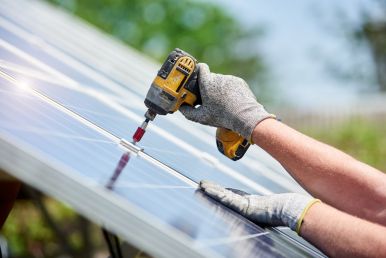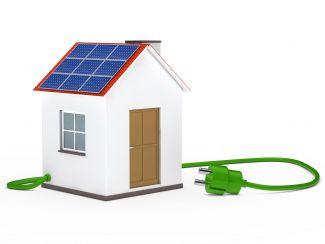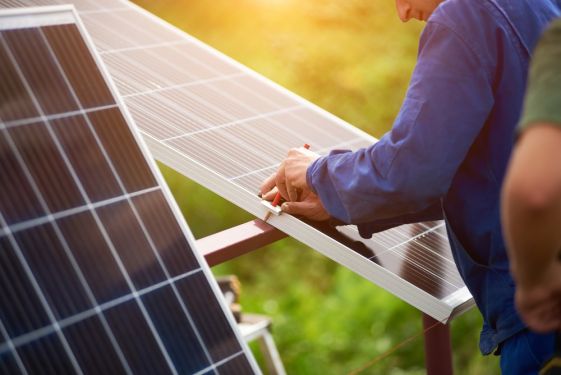Solar Panel Installation: How to Install Rooftop Solar Panels New Jersey?
I. Introduction
A. Overview of Rooftop Solar Panels

Installing rooftop solar panels is becoming increasingly popular as people are becoming more conscious of their environmental impact and seeking ways to reduce their carbon footprint. Solar panels harness the power of the sun to generate clean and renewable energy, making it an attractive option for those looking to transition to a sustainable energy source. In this article, we will provide a step-by-step guide on how to install rooftop solar panels, enabling you to embark on your journey toward a greener future.
II. Assessing your Roof’s Suitability
A. Determining the Roof’s Orientation and Tilt
B. Evaluating the Roof’s Structural Integrity
Before diving into the installation process, it is crucial to assess whether your roof is suitable for solar panel installation. Firstly, you need to determine the roof’s orientation and tilt to ensure maximum exposure to sunlight throughout the day. South-facing roofs with a tilt between 15 and 40 degrees are considered ideal for solar panel installation.
Additionally, evaluating the roof’s structural integrity is essential to ensure it can support the weight of the solar panels. Consult a professional to conduct a thorough inspection and provide expert advice on any necessary reinforcements or repairs before proceeding with the installation.
III. Obtaining Necessary Permits and Approvals
A. Researching Local Regulations and Requirements
B. Applying for Permits and Approvals
Before initiating the installation, familiarize yourself with your local regulations and requirements regarding solar panel installations. Each jurisdiction may have specific guidelines and permits that need to be obtained. Researching and understanding these regulations will help you comply with the necessary legalities.

Once you have gathered the information, proceed with applying for the required permits and approvals. This process may involve submitting various documents, such as architectural plans, electrical diagrams, and installation details. Ensure that you comply with all the necessary paperwork to avoid any legal complications.
IV. Selecting and Procuring Solar Panels and Equipment
A. Researching Solar Panel Options
B. Choosing an Inverter and Mounting System
C. Purchasing the Required Equipment
Selecting the right solar panels and equipment is crucial for an efficient and reliable solar system. Conduct thorough research on various solar panel options, considering factors such as efficiency, durability, and warranty. Additionally, choose an inverter and mounting system compatible with your chosen panels.
Once you have made your selections, proceed with purchasing the required equipment from a reputable supplier. Ensure that you double-check the specifications and compatibility of the components to avoid any compatibility issues during installation.
V. Hiring a Professional Installer or DIY
A. Weighing the Pros and Cons of Professional Installation
B. Considering DIY Installation
Deciding whether to hire a professional installer or undertake the installation yourself requires careful consideration. Professional installers bring experience and expertise to the table, ensuring a smooth and efficient installation process. However, hiring professionals can be costly.
Alternatively, if you possess the necessary skills, knowledge, and confidence, you may opt for a DIY installation. This route allows you to save money but requires thorough research, proper safety precautions, and adherence to installation guidelines.

VI. Installation Process
A. Preparing the Roof
B. Mounting the Solar Panels
C. Connecting the Wiring and Inverter
D. Testing and Commissioning the System
The installation process involves several steps, starting with preparing the roof by cleaning and ensuring a secure surface. Next, mount the solar panels using the chosen mounting system, ensuring proper alignment and secure attachment.
After the physical installation, connect the wiring and inverter as per the manufacturer’s instructions. It is crucial to follow electrical safety protocols and consult a professional electrician if needed.
Finally, thoroughly test and commission the solar system to ensure it is functioning optimally. Monitor the system’s performance regularly to identify any potential issues and seek professional assistance if necessary.
VII. Conclusion
A. Embracing Renewable Energy with Rooftop Solar Panels
Installing rooftop solar panels is a valuable investment that not only reduces your carbon footprint but also provides long-term energy cost savings. By following the step-by-step guide outlined in this article, you can confidently embark on your rooftop solar panel installation journey, contributing to a sustainable and greener future for generations to come.
